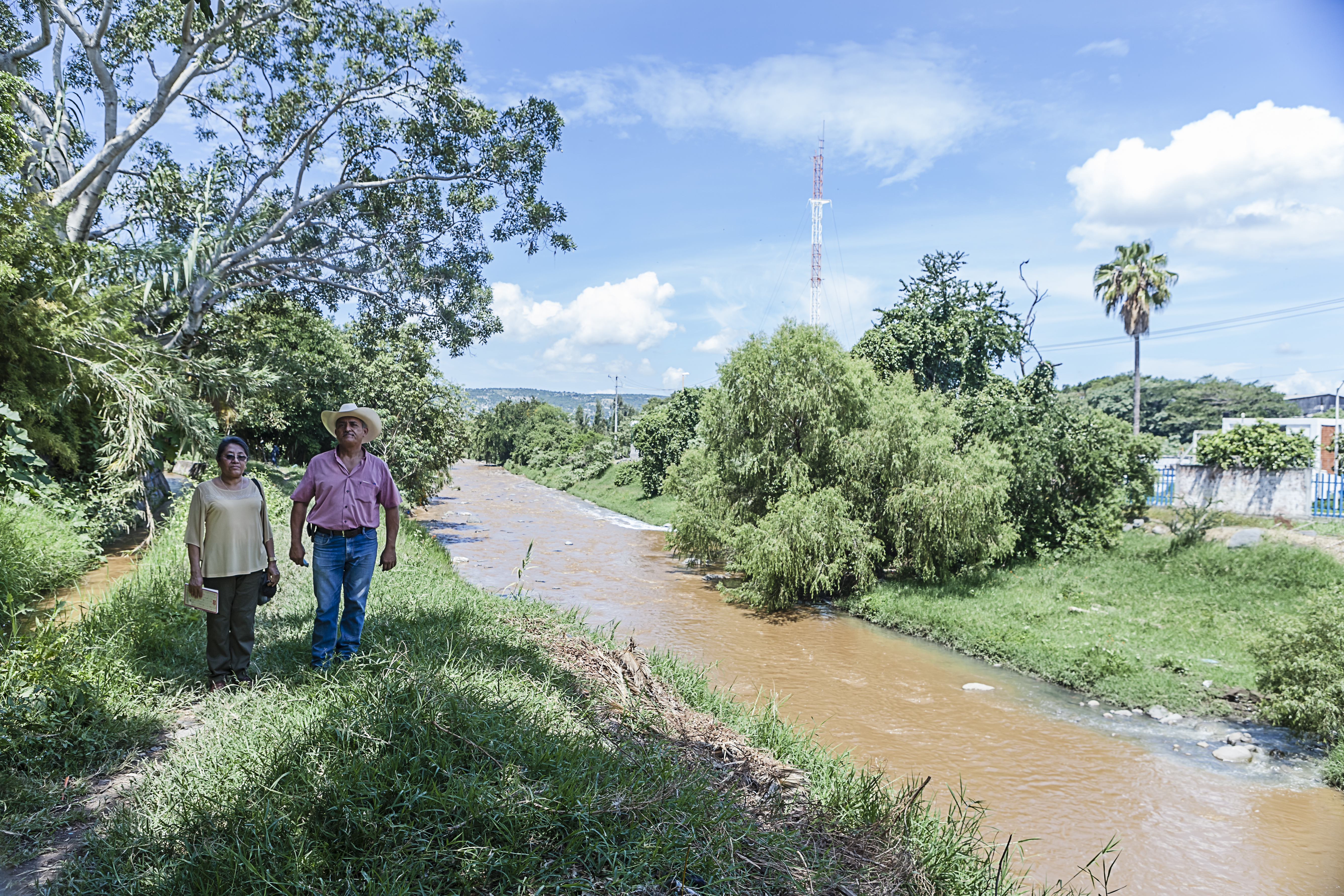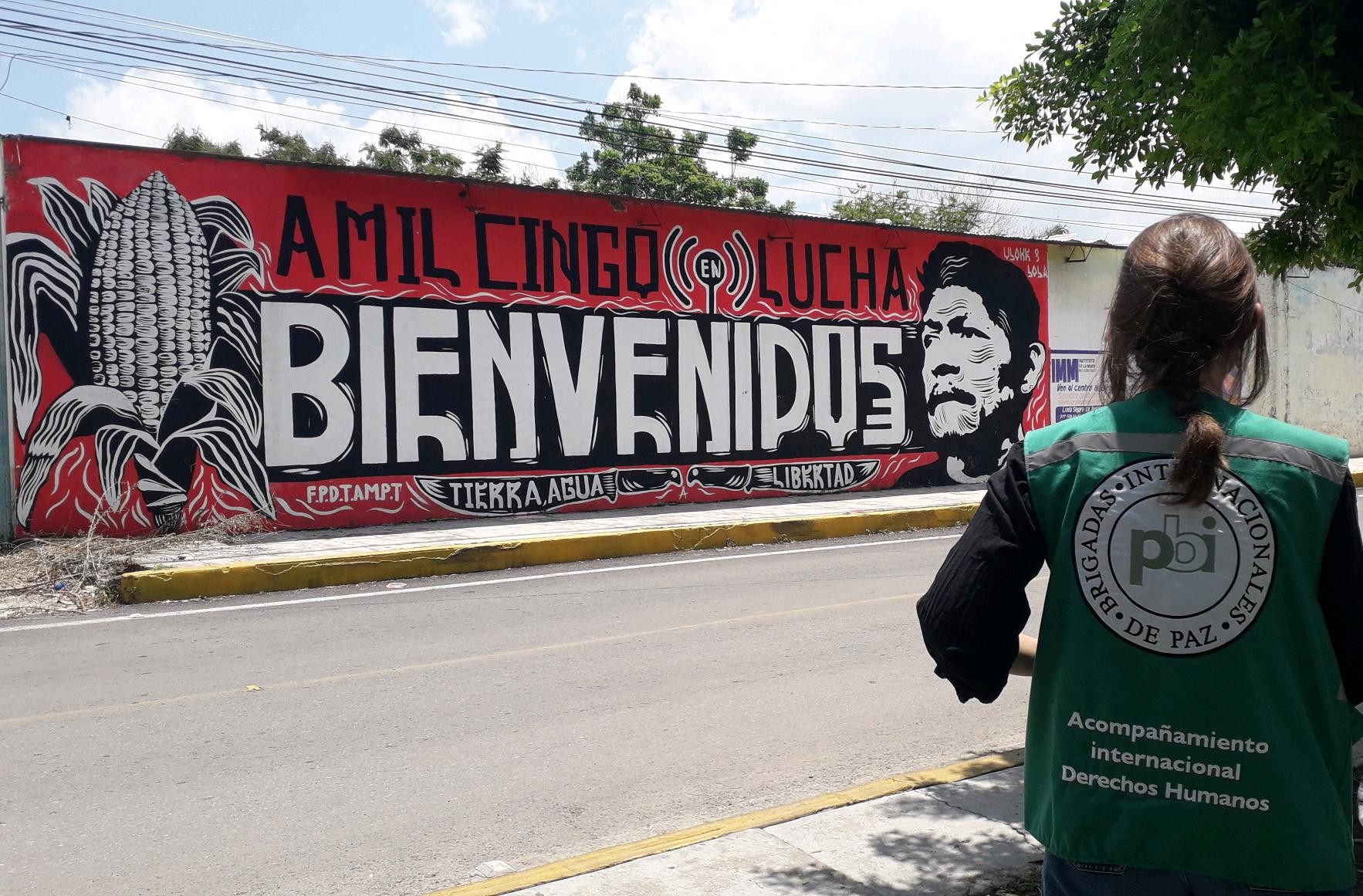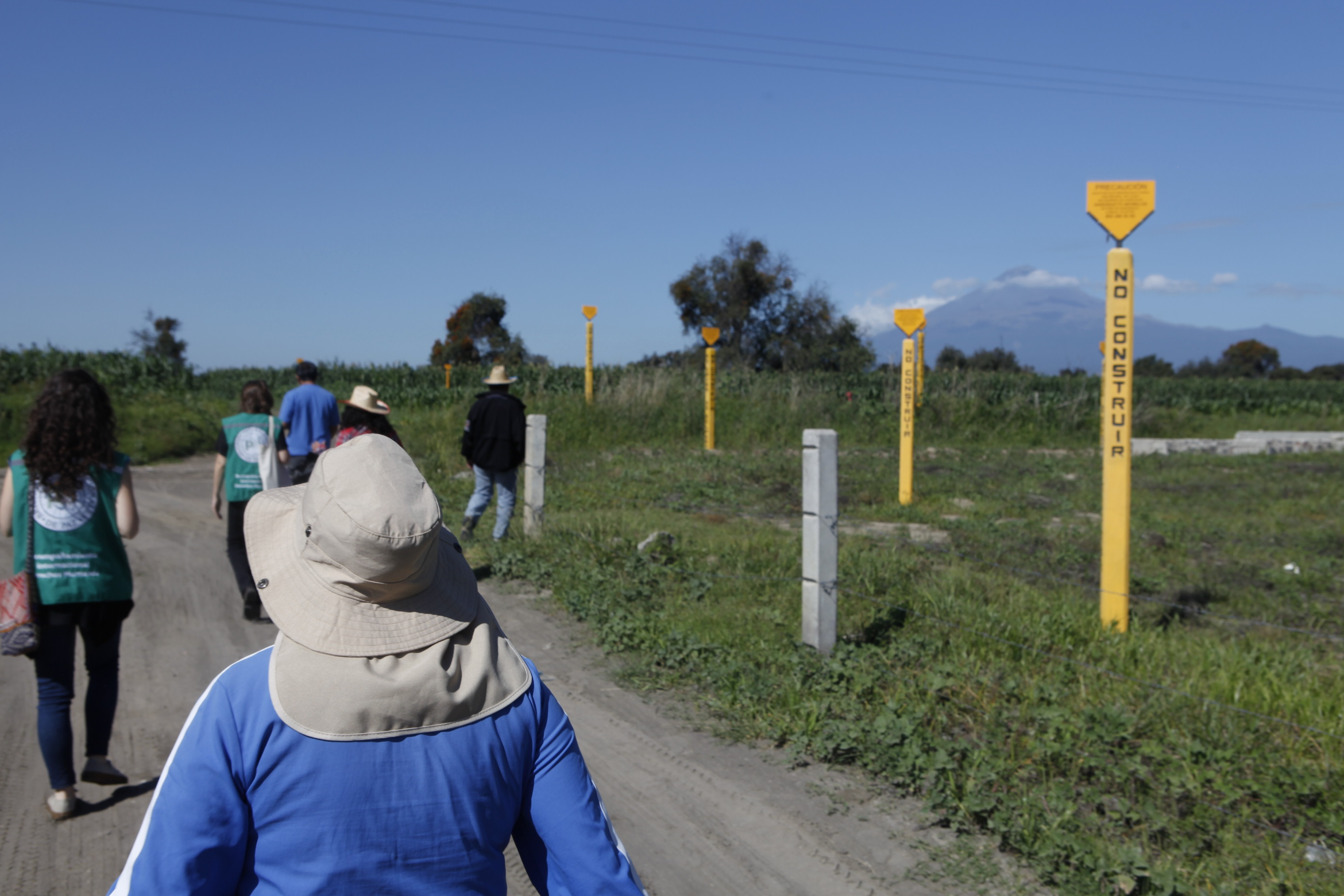"In the face of forgetfulness, which contributes to oppression and marginalization, the weapon of memory is vindicated. Memory is fundamental in the life of peoples, since it prevents us from falling into oblivion. Through memory we give meaning and, therefore, stability to human existence. In memory the land is much more than a productive space, since it is full of symbols and endearing references, that is why the old people of Temoac vehemently exclaim 'this land cost blood' in reference to the Zapatista deed 'and that is why it is not for sale'. In this way memory is related to a fundamental notion of men and women: dignity".
- Guillermo Franco Solís, "¡Qué están quietecitos!" Movimientos sociales en el oriente de Morelos (Book about Vinh Flores Laureano, revered social fighter from Temoac, Morelos and uncle of the murdered land and territory defender, Samir Flores Soberanes).
The struggles for land and territory in the birthplace of Emiliano Zapata - green and humid fields of rice, milpa and sugarcane crops in the states of Morelos and Puebla - are a legacy of the peasant struggles that took place in those regions. Opposition to extractivist projects, such as the Proyecto Integral Morelos (PIM), has unified in resistance diverse peoples and ejidos in Morelos and Puebla that are threatened by the privatization of natural resources and the dispossession of their lands by these megaprojects. Many communities and defenders of their territories share the resistance of their ancestors; they are the granddaughters and grandsons of those who, at the time of the Revolution, fought for the same lands and rights. Now, the imposition of megaprojects, specifically the PIM, in addition to the forced dispossession of land and property, brings with it pollution, direct effects on the health of the communities and the imminent danger of developing in a high-risk area due to its proximity to the Popocatepetl volcano.
In this context, some may wonder what is the MIP? The Integral Morelos Project (PIM) is a mega-project for the generation of electricity consisting of: a 160 km, 30-inch diameter gas pipeline that runs subway through the states of Morelos, Puebla and Tlaxcala, two combined cycle thermoelectric power plants to generate electricity using natural gas and water, and two 12 km aqueducts, one to transport water from the Morelos River and the other to transport water from the Puebla River: one to transport water from the Cuautla River to the two thermoelectric plants and the other to return the liquid to the same river through the Wastewater Treatment Plant (WWTP) in Cuautla, Morelos. All of this is accompanied by a line of high tension towers.
To better understand how the MIP impacts the communities, we toured several municipalities in the states of Morelos and Puebla, where communities that are directly affected by the project live:
The first stop on our tour to learn about the effects of the PIM was in the municipality of Ayala, Morelos, where we visited a section of the Cuautla River that allows us to witness two discharges into the river: one from the Wastewater Treatment Plant (WWTP), which is visible because of the dark liquid that is discharged into the river, and the other, a foamy discharge from the aqueduct that returns the used water from the thermoelectric plant. There we met Don Herminio Chávez, ejidatario of Moyotepec, and Doña Antonia Nava, member of the ejidal committee and member of the Committee for the Defense of Water in Ayala, who represent the opposition to the provision of water from the Cuautla River for the operation of the PIM.
Social organizations such as the Committee, defend that the water is not for sale, and on the contrary serves as a supply for the ejidos and peasants in the area, since its concession was granted to them by presidential decree, the culmination of a process of land distribution begun by Emiliano Zapata in 1914. Don Herminio and Doña Antonia tell us about the various acts of intimidation against them, such as extortion attempts, threats and the murder of ejidatario Francisco Vázquez, an opponent of the PIM. Despite this, they do not hesitate to defend the rights and dignity of their people.
From Ayala we continued our journey east to Huexca, Yecapixtla, Morelos. Upon arriving in the community of Huexca, we immediately noticed the destroyed roads in the town, as a result of the construction of the thermoelectric plant built by the Federal Electricity Commission (CFE). There we were received by Teresa Castellanos, member of the People's Front for the Defense of Land and Water (FPDTA), human rights defender and representative of the Huexca Committee in Resistance. With a serene look and a calm voice, Teresa shared with us the history of her town and emphasized that, in addition to the damage to the town's infrastructure, the proximity of the thermoelectric plant - located only 200 meters from the Huexca daycare center - has affected the health of the community and the local biodiversity. During operation, the thermoelectric plant emits noise of more than 110 decibels, which has caused nervous system damage, vomiting, and headaches in the community. Because the thermoelectric plant uses gas and water to generate energy, when it operates, it exhales chlorine gas vapor that causes acid rain, causing oxidation of crops, thus affecting agriculture and the pH of the soil. The contaminated water discharged from the thermo dump has also caused the death of the flora and fauna of the community's river.
On our third stop, several artistic murals depicting resistance to the PIM welcomed us to Amilcingo, Morelos.
One of the most tragic impacts of the PIM is the persecution and threats suffered by defenders of human rights, land and territory. Among the numerous cases of violations and aggressions, the most devastating has been the murder of FPDTA member, human rights defender and social leader, Samir Flores Soberanes. Samir, originally from the community of Amilcingo, Morelos, dedicated himself to informing his community about the risks of the megaproject, first through loudspeakers installed in his car, going from town to town to disseminate information, then founding the community radio station, Radio Amiltzinko, to transmit information and generate support for the organization in opposition to the MIP. In his life and death, Samir represents this struggle for the defense of the land in Amilcingo and other indigenous peoples in resistance to the exploitation of the PIM. Samir's murder remains in impunity as of February 2019.
Huilotepec, Atlixco, Puebla: As we continued on our way to Puebla, we met with Don Ángel Quintero, Ejidal Commissariat of San Isidro de Huilotepec and Juan Carlos Flores, lawyer and member of the FPDTA, who shared with us the social and legal struggle against the megaproject. "The struggle against the gas pipeline has united the towns," explains Don Angel, referring to the four communities in the municipality of Atlixco, Puebla that have jointly filed an injunction arguing the violations of the PIM in the collective rights of the communities. The lack of free, prior and informed consultation, the violation of their rights to self-determination as indigenous peoples, and the ignoring of the environmental impacts pointed out by the National Center for Disaster Prevention (CENAPRED) and the geophysics department of the UNAM exemplify the serious failures committed against the population of Atlixco.
In the last stop of the tour, we visited the industrial corridor of the municipality in Santa María Zacatepec, Juan C. Bonilla, Puebla, made up of several textile and automotive companies, located 50 meters from the PIM gas pipeline, in a seismic zone due to the Popocatépetl volcano, an area where the subway water is very close - only about 6 meters - to the surface. There we had a talk with Alejandro Torres and Marcelina Barranco, members of the FPDTA, Pueblos Unidos, and the group Guardians of the Metlapanapa River, according to whom "it is a latent threat to have the gas pipeline with the water underneath" and they fear that the floor could collapse at any moment, as happened with the famous sinkhole in Santa María Zacatepec.
The problem of water hoarding and contamination also affects their community. The dumping of toxic liquids from the industrial parks into the Metlapanapa River contaminates the artesian wells that supply water to the community and their farmland. Activists from Santa María Zacatepec, in opposing the exploitation of the community's land and water, have suffered repression in the form of threats, physical aggression, torture, arbitrary detentions, imprisonment, and criminalization.
The social claim of the peoples to defend land and life against "death projects", as the communities in resistance call the PIM and other industrialization projects, is of historical character.
"The land is not for sale, the land, as the good Zapata said, belongs to those who work it, but not to foreigners, not to investors, not to the rulers who today believe they own the land, the water and our lives." - Samir Flores Soberanes, in Samir sin reversa by Gloria Muñoz Ramírez.
Photo credis: M. A. Fernández y J. Marcos




